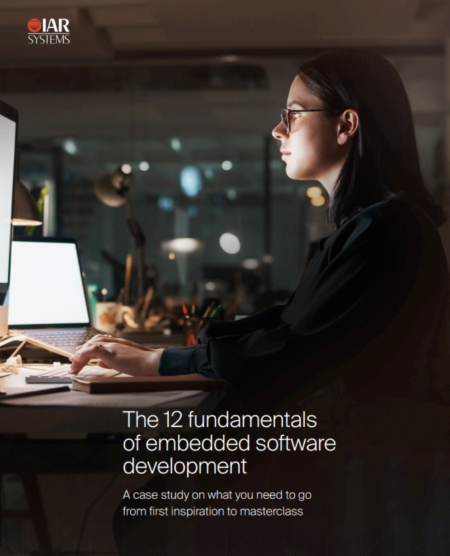Experts at IAR Systems have identified the 12 fundamentals of embedded software development.
Is it possible to speed time to market, secure quality, and—at the same time—stay within the budget? Companies must weigh which investments lead to a clear return on investment (ROI) and a reasonable total cost of ownership (TCO), particularly when developing embedded software.
From consumer electronics to automotive and industrial products, consumers constantly seek more innovative features in ever-shorter cycles. These requirements directly impact any embedded software, which is instrumental in the development, differentiation, and even a product’s success.
Today, embedded applications are becoming more complex than ever, built by large and often distributed teams with different skills, and include ever-changing requirements. Developers must address these challenges while focusing on innovation to deliver a product that meets or exceeds expectations and stands ahead in the market.
Experts from IAR Systems have been guiding and supporting embedded developers for more than 40 years. The company’s tools are an integral part of developers’ working routines and have become a de facto standard in terms of increased productivity, efficiency, and quality, reduced costs, and accelerated time-to-market. These experts have identified the 12 fundamentals of embedded software development, which are explained in detail in a newly released e-book tinyurl.com/3p38srxj.
The 12 fundamentals of embedded software development
Taking the 12 fundamentals of embedded software into account provides a tangible, positive impact on ROI and TCO for developers working with professional tool solutions.
1. An ideal development environment should be an all-in-one IDE with project management tools and an editor.
2. Device support can come from many vendors, including 8-, 16-, 32-, and 64-bit cores connected to various projects in parallel and with different requirements.
3. By optimizing the code size and application, companies may save money by using a smaller device.
4. Code performance is essential for faster code and a better user experience.
5. Code quality achieved by following best programming practices results in better products.
6. Debugging is the key to enabling full control of the application in real-time to remove bugs and improve quality.
7. Easy licensing and management enables customers to pay for exactly what they need from single users to license pools.
8. Access to support is an essential factor that ensures programmers can focus on their code and get assistance and training when needed.
9. DevOps and scalability are critical factors in addressing growing demand and an organization’s need to modernize their infrastructure towards automated CI/CD workflows.
10. Compliance and safety are mandatory to prove that companies comply with specific requirements in their sectors.
11. Developing an ecosystem and partners benefits customers and provides the assurance that new devices, middleware, and integrations will be supported in the future.
12. Security is mandatory. Companies are looking for ways to implement security in the early and even late stages of development.
Use case studies in the complete e-book illustrate exactly how developers can leverage these benefits.
Using commercial tools with an upfront investment versus “free” tools offered to lower barriers to entry for using specific chips in product designs is an effective way to stay on schedule and reduce the overall cost of developing a product. With commercial tools, companies and developers are “buying” a faster time-to-market and delivering high-quality, competitive products within budget.

